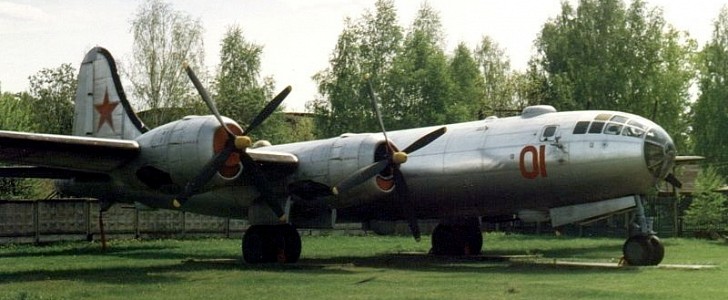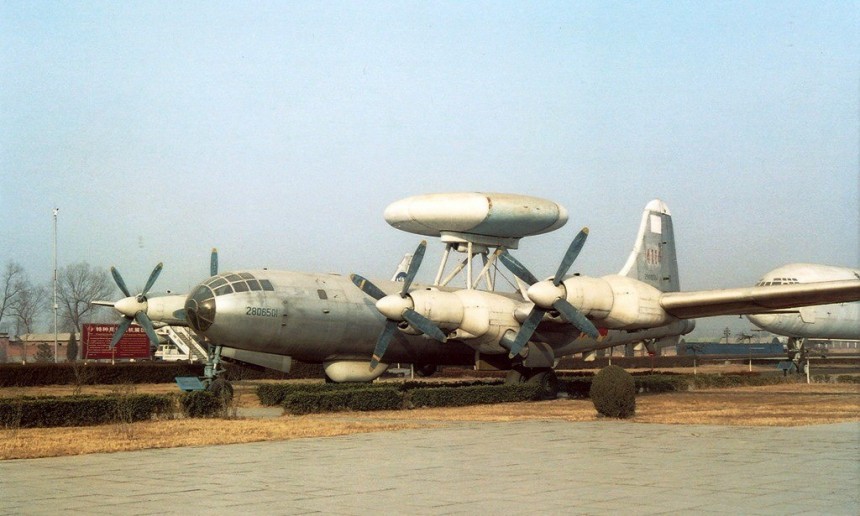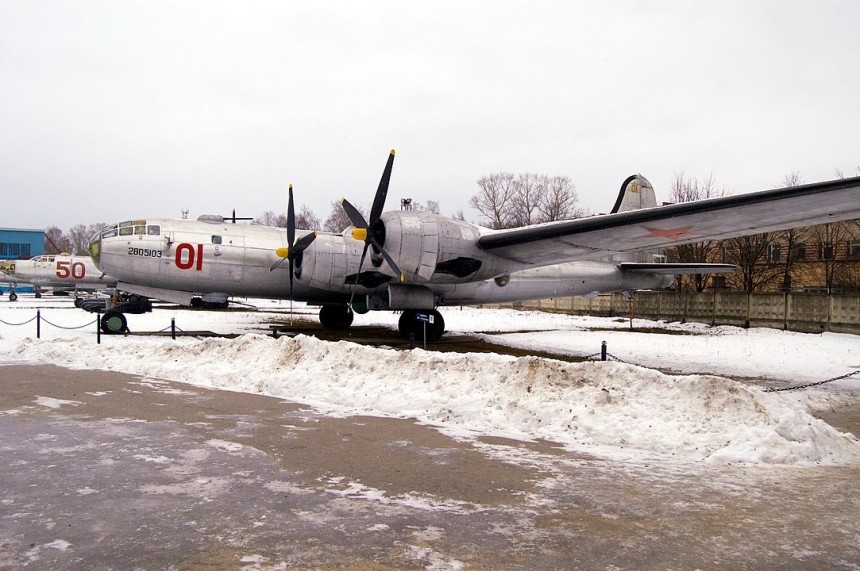If imitation is the most sincere form of flattery, the Soviet Tupolev TU-4 should have made Western Nations tickled pink. But quite the opposite was the case.
In fact, the impression on American Air Force leader's faces when they first laid eyes on an unlicensed copycat of a Boeing B-29 was as if they'd just about soiled themselves in shock. The American-Soviet Lend-Lease program is one of the few well-understood and well-celebrated collaborations between the two rising superpowers during the Second World War.
The Soviets were not the only nation to benefit from the industrial might of North America. China, Great Britain, Brazil, Yugoslavia, Mexico, and many other nations were also beneficiaries. It was America at the zenith of its manufacturing might, and it showed.
Some of the more notable aircraft shipped in crates from America to the Eastern Front included some of the era's most iconic and celebrated warbirds. Fighters like the Republic P-47 Thunderbolt commonly and lovingly called the "Stalinbolt" in modern wargaming circles.
But there were also P-40 Warhawks/Kittyhawks, Douglas A-20 Havocs and C-47 Skytrains, Bell P-39/63 Cobras, and even a handful of Boeing B-17 Strategic Bombers and P-51 Mustangs. Not to mention a few battalions worth of Sherman tanks. Safe to say, there was plenty of metal to go around.
But one not-so-little trinket the Americans never dared to put in Soviet hands was the Boeing B-29 Superfortress. This greatly angered Joseph Stalin, but knowing the kind of short-tempered powder keg the Soviet Premiere was, this shocks about 0% of people. Especially during the Second World War.
The Superfortress was never deployed to Europe in any significant capacity, save for one or two propaganda missions to scare the collective you-know-what out of the crumbling German Wermacht. But they did serve in the Pacific theater against Japan.
It was during its time over the Pacific that a few B-29s encountered mechanical troubles and were forced to land directly in what was essentially Stalin's back porch. The pilots were returned to their units without incident. But the bombers themselves were a whole other matter.
A convenient little non-interference clause with Imperial Japanese matters gave Stalin and Soviet High Command the perfect excuse to tell American military leadership to collectively "get bent" when they came asking for their shiny new bombers back.
Stalin ordered the Tupolev Design Bureau to reverse engineer the Superfortress in a fashion that made them easier to build for the metric measurement-minded Soviet engineers to comprehend. Imperial measurements used by Boeing were gradually converted into metric units. In the end, it's said the Tu-4 was only 1% heavier overall than a genuine Superfortress. Not bad, considering the Soviet doctrine of simplifying and adding weight. So, the reverse of a Lotus, how hilarious.
By 1947, the Tu-4 was taking to the skies over Soviet airspace, completely under the noses of American intelligence. Every alteration to the design had to be approved by Stalin himself. Funny, as Stalin was not an aerospace engineer. We can only assume you can pull such rabbits out of your hat when you're the most powerful man in any direction for thousands of miles.
But in the end, it appears he just let the Tupolev Design Bureau do as it needed to make the project operational. Powering this Soviet leviathan were four Shvetsov ASh-73 18 cylinder radial twin-row engines. A decent counterpart to the famed Wright 3350 Duplex Cyclone radial units present on the American B-29. It also had a full array of defensive cannons and machine guns, as did the Superfortress.
The aircraft was first displayed during a flyover on August third, 1947, at the Tushino Aviation Day parade on Soviet home soil. Here, American, Canadian, and British airmen got their first glimpses of what must have looked like some kind of nightmarish optical illusion, for the Americans especially. Sitting right in front of their faces was a true-to-life copycat of the airplane many define as having won the war in the Pacific. But this time, bearing the Soviet red star.
The seething look of anger, outrage, and perhaps even a little jealousy on the faces of American personnel must have sustained Stalin for many days. At least up until his slow, debilitating, and agonizing death from a massive stroke a few years later. The Tu-4 would continue to serve communist nations right up until the fall of the Soviet Union in the Soviet Chinese air forces, retiring in 1988. Check back for more wacky airplane profiles and so much more here on autoevolution.
The Soviets were not the only nation to benefit from the industrial might of North America. China, Great Britain, Brazil, Yugoslavia, Mexico, and many other nations were also beneficiaries. It was America at the zenith of its manufacturing might, and it showed.
Some of the more notable aircraft shipped in crates from America to the Eastern Front included some of the era's most iconic and celebrated warbirds. Fighters like the Republic P-47 Thunderbolt commonly and lovingly called the "Stalinbolt" in modern wargaming circles.
But there were also P-40 Warhawks/Kittyhawks, Douglas A-20 Havocs and C-47 Skytrains, Bell P-39/63 Cobras, and even a handful of Boeing B-17 Strategic Bombers and P-51 Mustangs. Not to mention a few battalions worth of Sherman tanks. Safe to say, there was plenty of metal to go around.
The Superfortress was never deployed to Europe in any significant capacity, save for one or two propaganda missions to scare the collective you-know-what out of the crumbling German Wermacht. But they did serve in the Pacific theater against Japan.
It was during its time over the Pacific that a few B-29s encountered mechanical troubles and were forced to land directly in what was essentially Stalin's back porch. The pilots were returned to their units without incident. But the bombers themselves were a whole other matter.
A convenient little non-interference clause with Imperial Japanese matters gave Stalin and Soviet High Command the perfect excuse to tell American military leadership to collectively "get bent" when they came asking for their shiny new bombers back.
By 1947, the Tu-4 was taking to the skies over Soviet airspace, completely under the noses of American intelligence. Every alteration to the design had to be approved by Stalin himself. Funny, as Stalin was not an aerospace engineer. We can only assume you can pull such rabbits out of your hat when you're the most powerful man in any direction for thousands of miles.
But in the end, it appears he just let the Tupolev Design Bureau do as it needed to make the project operational. Powering this Soviet leviathan were four Shvetsov ASh-73 18 cylinder radial twin-row engines. A decent counterpart to the famed Wright 3350 Duplex Cyclone radial units present on the American B-29. It also had a full array of defensive cannons and machine guns, as did the Superfortress.
The aircraft was first displayed during a flyover on August third, 1947, at the Tushino Aviation Day parade on Soviet home soil. Here, American, Canadian, and British airmen got their first glimpses of what must have looked like some kind of nightmarish optical illusion, for the Americans especially. Sitting right in front of their faces was a true-to-life copycat of the airplane many define as having won the war in the Pacific. But this time, bearing the Soviet red star.
The seething look of anger, outrage, and perhaps even a little jealousy on the faces of American personnel must have sustained Stalin for many days. At least up until his slow, debilitating, and agonizing death from a massive stroke a few years later. The Tu-4 would continue to serve communist nations right up until the fall of the Soviet Union in the Soviet Chinese air forces, retiring in 1988. Check back for more wacky airplane profiles and so much more here on autoevolution.








